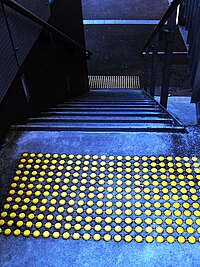
Photo from wikipedia
Ultrasensitive flexible pressure sensors with excellent linearity are essential for achieving tactile perception. Although microstructured dielectrics have endowed capacitive sensors with ultrahigh sensitivity, the compromise of sensitivity with increasing pressure… Click to show full abstract
Ultrasensitive flexible pressure sensors with excellent linearity are essential for achieving tactile perception. Although microstructured dielectrics have endowed capacitive sensors with ultrahigh sensitivity, the compromise of sensitivity with increasing pressure is an issue yet to be resolved. Herein, a spontaneously wrinkled MWCNT/PDMS dielectric layer is proposed to realize the excellent sensitivity and linearity of capacitive sensors for tactile perception. The synergistic effect of a high dielectric constant and wrinkled microstructures enables the sensor to exhibit linearity up to 21 kPa with a sensitivity of 1.448 kPa−1 and a detection limit of 0.2 Pa. Owing to these merits, the sensor monitors subtle physiological signals such as various arterial pulses and respiration. This sensor is further integrated into a fully multimaterial 3D‐printed soft pneumatic finger to realize material hardness perception. Eight materials with different hardness values are successfully discriminated, and the capacitance of the sensor varies linearly (R2 > 0.975) with increasing hardness. Moreover, the sensitivity to the material hardness can be tuned by controlling the inflation pressure of the soft finger. As a proof of concept, the finger is used to discriminate pork fats with different hardness, paving the way for hardness discrimination in clinical palpation.
Journal Title: Advanced Science
Year Published: 2023
Link to full text (if available)
Share on Social Media: Sign Up to like & get
recommendations!